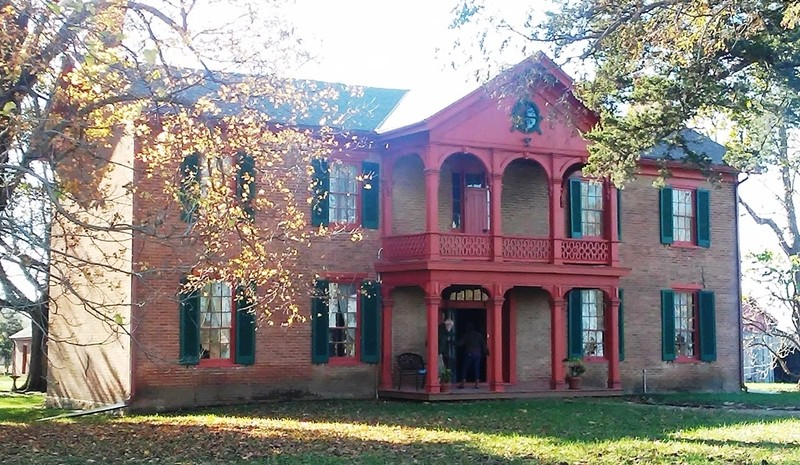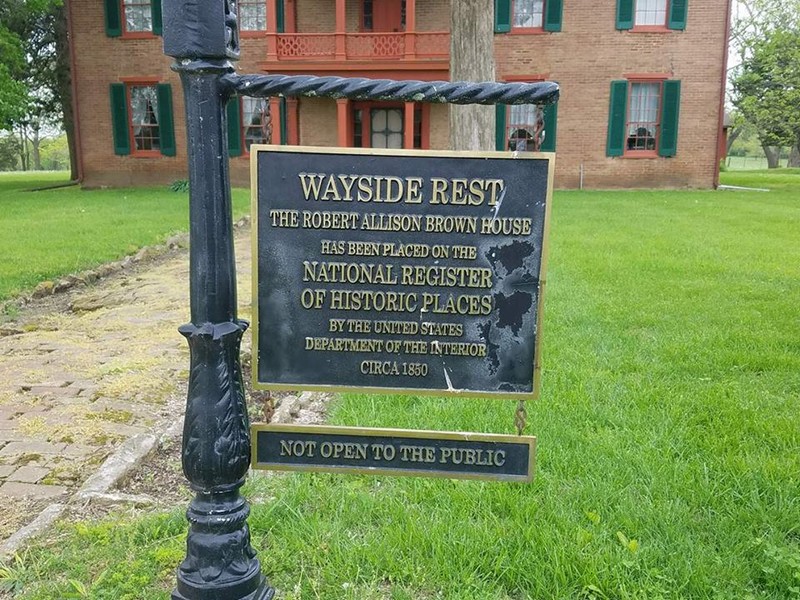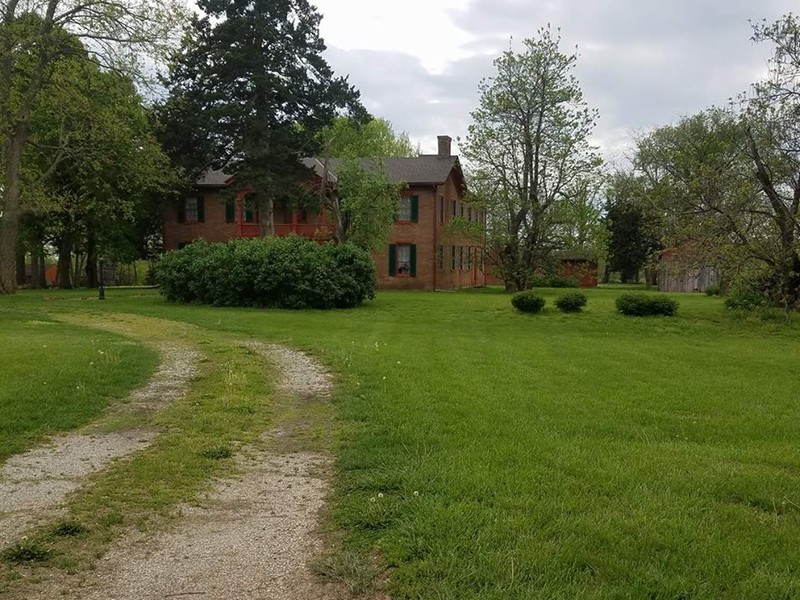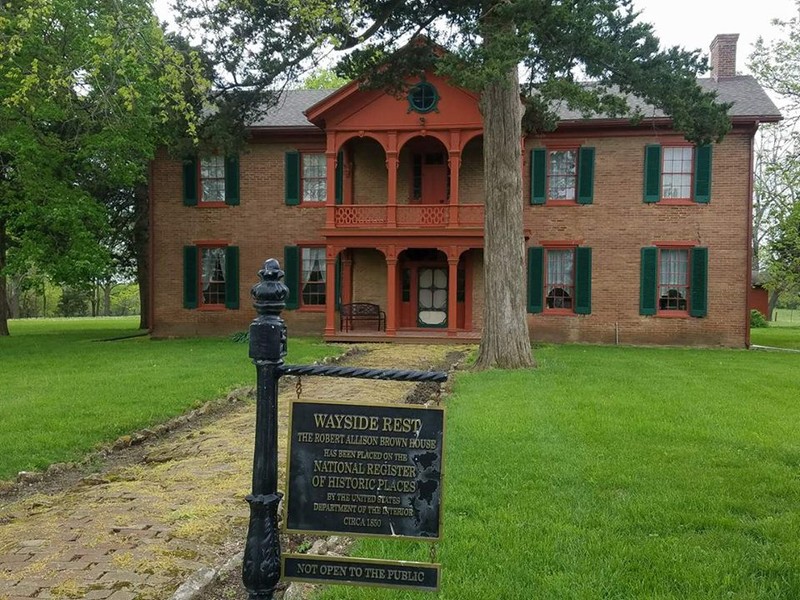Robert Allison Brown Home
Introduction
Text-to-speech Audio
Robert Allison Brown built the historic house in 1850 about one mile north of modern-day Harrisonville. Alongside the two-story brick structure includes several outbuildings, some of which housed around forty slaves. Other buildings included an apple house, a smokehouse, shed, a vegetable cellar, and a privy. Brown, one of the county's earliest settlers, obtained 1,000 acres in 1842, which grew to twice in later years. Travelers referred to the farm as Wayside Rest.
Images
Wayside Rest, the Robert A. Brown House

Robert A Brown House Sign

Brown house, yard and out buildings.

Robert A Brown House

Backstory and Context
Text-to-speech Audio
Built in 1850, the Robert A. Brown house, a Classic Revival style of residential architecture, exemplifies the elegance of the mid-nineteenth-century residences of prosperous farmers, referred to as Wayside Rest by the many travelers who visited. Despite being a Southern sympathizer, he served as an area delegate in Missouri and voted against secession, but he did not support the Emancipation Proclamation. Indeed, Allison Brown owned forty to fifty slaves who worked on his 2,000-acre farm, one of the largest farm owners in Cass County.
Robert A. Brown, son of General John Brown, was one of the earliest and most influential settlers of modern-day Cass County. He was born in Tennessee in 1808 and moved to Cass County in 1842 with his wife, Mary Roddye Gillenwaters, and children. He bought land from the government and other settlers and assembled 1,000 acres of heavily timbered land. The couple raised seven children in the house, which sat amidst fourteen buildings, including a smokehouse, apple house, woodshed and workshop, slave quarters, and barns. Five years later, in 1847, Brown built the county's first grist mills and sawmills and helped erect the first log church (located on Brown's land), which doubled as a school.
In 1861, Brown served as a delegate from Bates, Jackson, and Cass Counties to the Missouri Secession Convention. Though a Southern sympathizer, Brown voted against secession for Missouri. However, he also opposed the Emancipation Proclamation, so, in 1863, he resigned his seat because Brown felt he could not fairly represent his constituents who supported the Proclamation.
During the Civil War, Brown sent most of his slaves to Dallas and, because of his vote against secession, his house and property were spared under the infamous Union Order No. 11, calling for the destruction of the property of Southern sympathizers. Nevertheless, Brown once killed three men in defense of his home, one of several times marauders attacked his home.
Sources
"Area 8: North of Harrisonville." Cass County Public Library. Accessed January 26, 2023. https://www.casscolibrary.org/casscountyhistory/map8/.
Fischer, William. "Wayside Rest: The Robert Allison Brown House." The Historical Marker Database. hmdb.org. April 27, 2022. https://www.hmdb.org/m.asp?m=99463.
Holmes, M. Patricia. "Nomination Form: Robert A. Brown House." National Register of Historic Places. mostateparks.com. 1970. https://mostateparks.com/sites/mostateparks/files/Brown%20House.pdf."
Slave Stories." Cass County Public Library. Accessed January 26, 2023. https://www.casscolibrary.org/casscountyhistory/panel10/.
William Fischer, Jr. Taken: November 3, 2016 and located at The Historical Marker Database: https://www.hmdb.org/m.asp?m=99463
